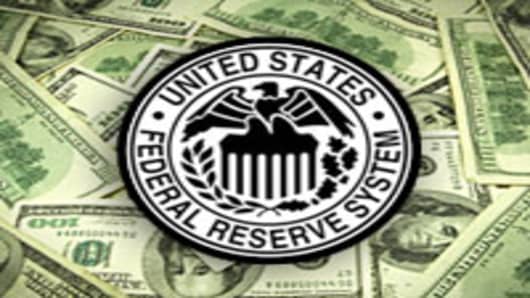Interest rates are heading lower, counter to what many in the bond market thought might happen as the Federal Reserve reaches the end of its quantitative easing program.
The 10-year yieldTuesday slipped below 3.1 percent, just above a key technical level of 3.05/3.07 percent and the psychologically important 3.0 percent level. Treasury yields fall in an inverse move as buyers push bond prices higher.
Strategists say there are several catalysts moving bonds, including a series of weaker economic data; reinvestment from accounts that were in cash; and the flight to safety on concerns about European sovereign debt.
The unwind trade from the Fed's quantitative easing program is also a big factor, and it has more to do with how risk assets responded to QE2, as the quantitative easing program is called on Wall Street.
The controversial QE2 program, under which the Fed is buying $600 billion in Treasury securities, comes to an end in June. The program was intended to keep rates low and push investors into riskier assets. The Fed will continue to reinvest proceeds from its mortgage portfolio into Treasurys after that date, as mortgage securities roll off or expire.
Since QE2 was first suggested by Fed Chairman Ben Bernanke last August, stocks have surged and commodities boomed. Rates on the 10-year were at a low of 2.33 percent in October 2010, just before the QE2 purchases began, and reached a high of 3.77 percent in February.
"I think the commodities move starting last week opened up everybody's eyes," said John Briggs, Treasury strategist at RBS.
"...QE forced everbody out of Treasurys and into risk assets. I think people were looking at the fact that stocks were up 28 percent after Jackson Hole and were wondering, when the liquidity pump comes off the table, whether there would be a retracement."
CRT Capital Chief Treasury Strategist David Ader calls himself a "reluctant bull" and says the lower yields may be around for a while.
"I think people are going to be surprised that rates are going to stay pretty low, certainly into the third quarter. If it's a real growth story, I would say we are going to be backing up and by the end of the fourth quarter, we'll certainly be pricing in a hike for next year," he said.
"I think this is about an unwind of other markets that got overheated as much as Treasury got oversold," he said. Ader said the market is also carefully watching the Congressional debate on whether to raise the debt ceiling, though it appears they will come to an agreement before the ceiling is reached in August.
The closely-watched 10-year yield could reach 3 percent, or even lower, according to some strategists.
"We could get below 3 percent if stocks begin to correct seriously and Euroepans can't get their house in order. To me, it feels liked we priced in [that] first quarter growth fears could spill into second quarter," said Briggs.
Barclays' Adam Brown, however, says the move lower in rates is closer to the end than the beginning. "We wouldn't be surprised to see it go a little more... (the 10-year yield) at 3.07 to 3.0 should provide some pretty good resistance. Without any new factors, it will be tough to break through it," he said.
Questions? Comments? Email us at marketinsider@cnbc.com



